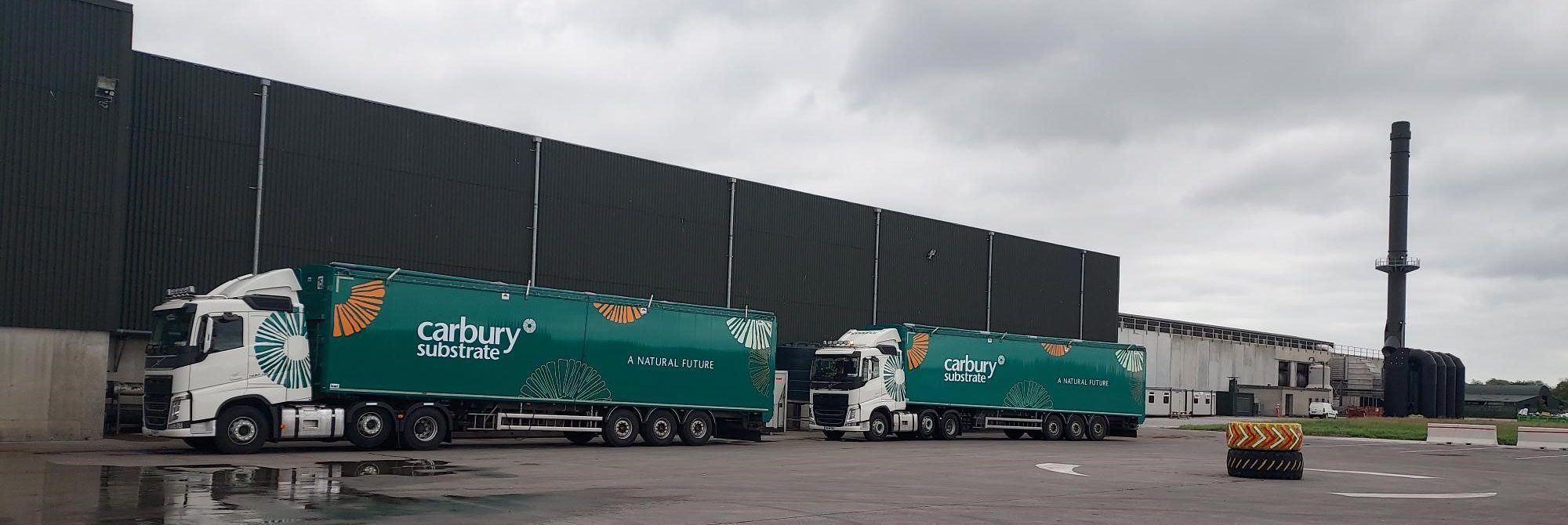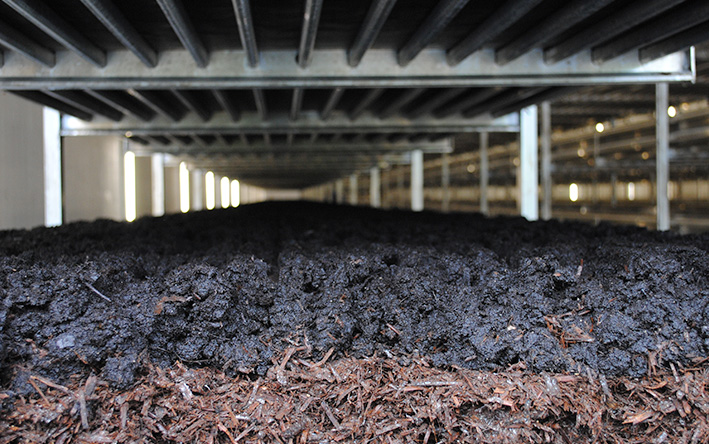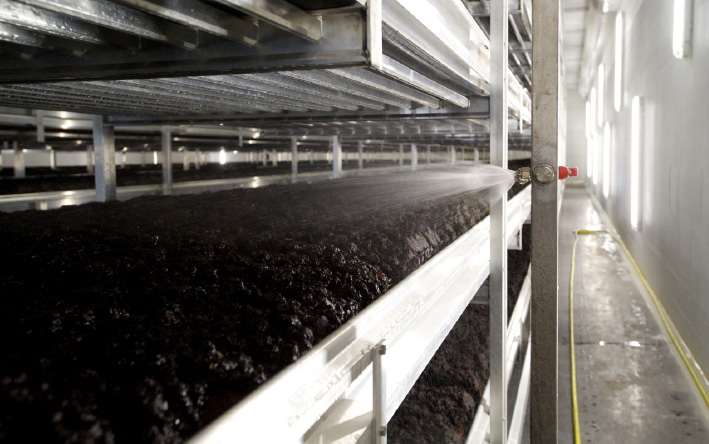Substrate
There are many processes involved before our mushrooms arrive on the supermarket shelves. We believe that goodness in, equals goodness out—that the mushrooms we grow are only as good as the substrate they’re grown from. Making mushroom substrate is a complex process that we’ve been perfecting for 40 years.
Mushroom substrate is a unique living organism; it varies according to the environment it is produced in. We have substrate sites across Europe, Ireland, the UK and Canada. Each of our substrate sites are run by a team of specialists, taking raw materials from the local area. As well as making substrate for our own farms, we also make substrate for other mushrooms growers.
There are 4 main phases for making substrate:
Phase 1
We source all the raw materials for substrate locally. Bales of straw are mixed with poultry manure, horse manure, water and gypsum. When mixed, the material is filled into large aerated concrete vessels, called bunkers. During this phase the substrate reaches temperatures of 80 degrees Celsius.
After 7 – 13 days the Phase 1 process is complete, ready for the Phase 2 process to begin.

Phase 2
The material is removed from the bunkers and filled into closed tunnels, where we monitor and control a series of temperature changes – the most important of which is pasteurisation. Pasteurisation helps remove any unwanted organisms from the substrate. The next and most important stage of Phase 2 is the conditioning of the substrate. This means that microbes convert ammonia and amines into protein.
Phase 2 takes approximately 5 – 6 days. The climate controlled “tunnel” heats the substrate to 58 degrees Celsius for pasteurisation and then conditions it at 48 degrees Celsius.
Note: Phase 2 includes more than just pasteurisation and conditioning, the real first step is levelling the temperature and the last step is cooling down.
Phase 3
Once the Phase 2 process is complete, the substrate is cooled and removed from the Phase 2 tunnels. Mushroom spawn is added and the substrate is then refilled into Phase 3 tunnels. Spawn is usually made with rye or millet grain that has been sterilised and inoculated with mushroom tissue (mycelium). This Phase 3 incubation process takes 15-17 days. During this time mycelium grows throughout the substrate.
After the 15-17 day incubation period, the Phase 3 substrate is loaded into specially designed trucks for transport to the growing houses.
As well as using the substrate for our own farms, we sell Phase 3 substrate to other growers.

Phase 4
All of our German, and one of our Dutch, substrate sites are able to make Phase 4 substrate. This means that the Phase 3 substrate is filled into trays together with the casing soil and the first two weeks of the mushroom growing process (i.e. ‘pinning’) is carried out in-house before transport to the growing farm.
As the mushroom substrate is filled into the growing rooms a layer of peat is applied to the surface of the material. The layer is called the casing layer and is essential for the formation of the mushrooms. Over a 3-4 day period, the mushroom tissue grows throughout the substrate and up through the casing layer.
The environment is then altered to simulate an autumn day, which promotes the formation of mushrooms. As a result, tiny mushroom heads (pins) begin to appear. During the next two weeks the levels of moisture, temperature, humidity, carbon dioxide and air movement are carefully monitored.
The pins eventually grow into mushrooms. The mushrooms are picked by hand to maintain the highest possible quality. All our mushrooms are cooled quickly after harvesting and are transported in refrigerated trucks.
For more, please visit https://walkro.eu/

Our Products
Mushrooms are a powerful, nutrient-rich food with loads of health-boosting properties. They’re versatile too which makes them a great addition to many recipes for added vitamins, minerals and antioxidants.
At Monaghan, we’re incredibly passionate about the nutritional benefits that mushrooms provide to consumers and we’re on a mission to share these incredible benefits with the world.

